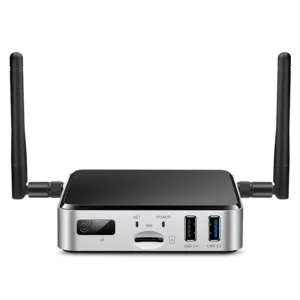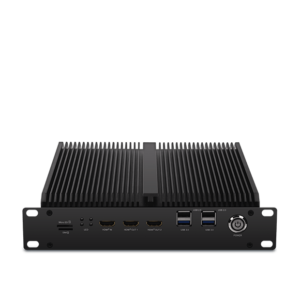Real-World Applications of AI on Edge Devices
Real-World Applications of AI on Edge Devices
Blog Article
Real-World Programs of AI on Edge Devices
Real-World Purposes of AI on Side Products
Artificial intelligence (AI) is no more limited to the world of big, centralized data centers. Because of advancements in engineering, edge units now enjoy a key position in deploying AI immediately where information is generated. But what does AI on edge products suggest, and why is it making this kind of news? Here, we'll examine how edge ai platform works in the real world through edge units and reveal their wide variety of practical applications.

What's AI on Side Units?
AI on side devices describes deploying synthetic intelligence methods directly on units like smartphones, cameras, drones, or IoT sensors. They do not want access to centralized machines for handling data; instead, they perform evaluation and choices domestically, making the process quicker, better, and usually more secure.
The "edge" here merely describes research performed near or at the foundation of data era, rather than counting on the cloud. That change is driven by the requirements for real-time knowledge running and the need to decrease latency, improve solitude, and minimize bandwidth usage.
Essential Real-World Applications of Edge AI
1. Smart Detective
AI-powered cameras designed with skin recognition, action detection, and anomaly detection are transforming detective systems. Side devices in this domain can analyze movie revenues in real-time to recognize dubious actions, remove false alerts, and increase public safety. As an example, AI formulas may discover strange actions and alert authorities straight away without the need to send video information to a main server for analysis.
2. Healthcare Tracking
Wearable devices and portable medical equipment are leveraging m.2 ai accelerator for managing wellness data more efficiently. Edge-based AI in devices like health trackers and smartwatches monitors users' vitals, such as for example heart rate, air degrees, or body stress, in real-time. These programs analyze knowledge locally and offer fast feedback, paving just how for faster intervention throughout emergencies.
Beyond wearables, sophisticated medical imaging products built with on-device AI may identify signals of disorders like cancer, permitting earlier diagnoses even in rural parts without internet connectivity.
3. Autonomous Cars
Self-driving vehicles are among the most well-known types of side AI in action. With detectors, cameras, and LiDAR techniques providing as data sources, AI computations get place onboard these cars to make split-second decisions. From finding pedestrians and obstacles to moving town streets, edge AI guarantees that the car runs reliably and efficiently. The real-time processing capability of side units eliminates the reliance on high-latency cloud methods, ensuring security in life-critical scenarios.
4. Retail Analytics
Side units in retail situations are helping organizations analyze customer behavior. Intelligent cabinets and AI-equipped cameras may identify client choices, check stock, and even modify in-store activities in true time. The data made from these devices helps stores produce knowledgeable choices, increase customer care, and enhance inventory management.

5. Commercial IoT
Factories and commercial crops are adopting side AI to revolutionize their tracking and automation processes. AI-powered detectors on equipment identify possible errors a long time before they lead to costly failures. Predictive maintenance pushed by side AI reduces downtime, increases output, and ensures safety on the manufacturing floor.
6. Individualized Experiences in Customer Units
Your smartphone is a perfect example of how edge AI personalizes consumer experiences. Functions such as voice assistants, flexible camera options, and on-device language translation use real-time AI to answer person needs without sending painful and sensitive data to external servers. That fosters both comfort and solitude for the finish user.
The Growing Impact of Edge AI
The adoption of AI on edge products remains to rise, driven by industries' increasing need for low-latency, real-time computing, and better data privacy. Its applications are reshaping industries which range from healthcare and automotive to public security and retail. By adding AI's energy closer to wherever knowledge is generated, side units aren't just increasing efficiency but in addition demonstrating the limitless potential of development in the present linked world. Report this page